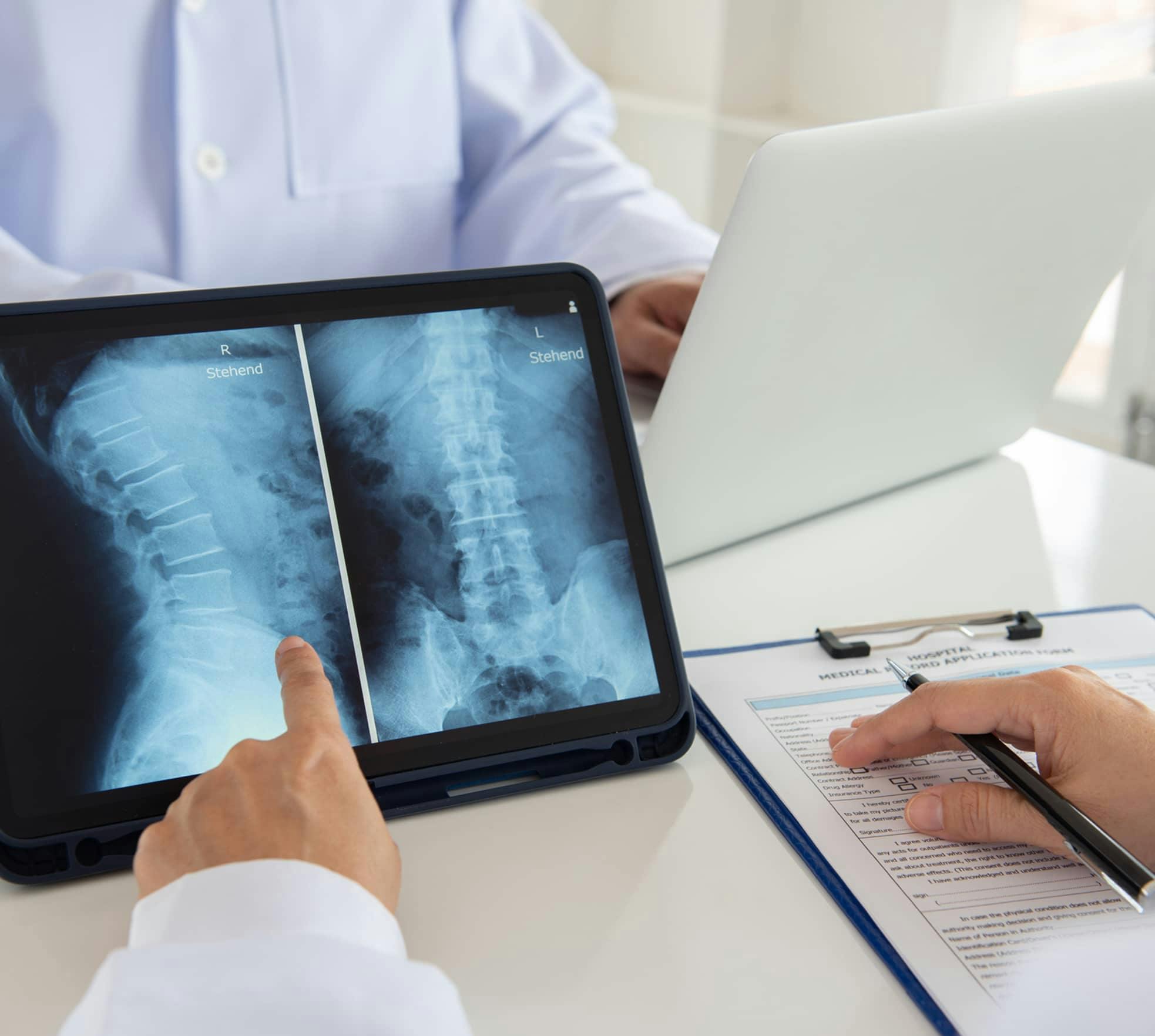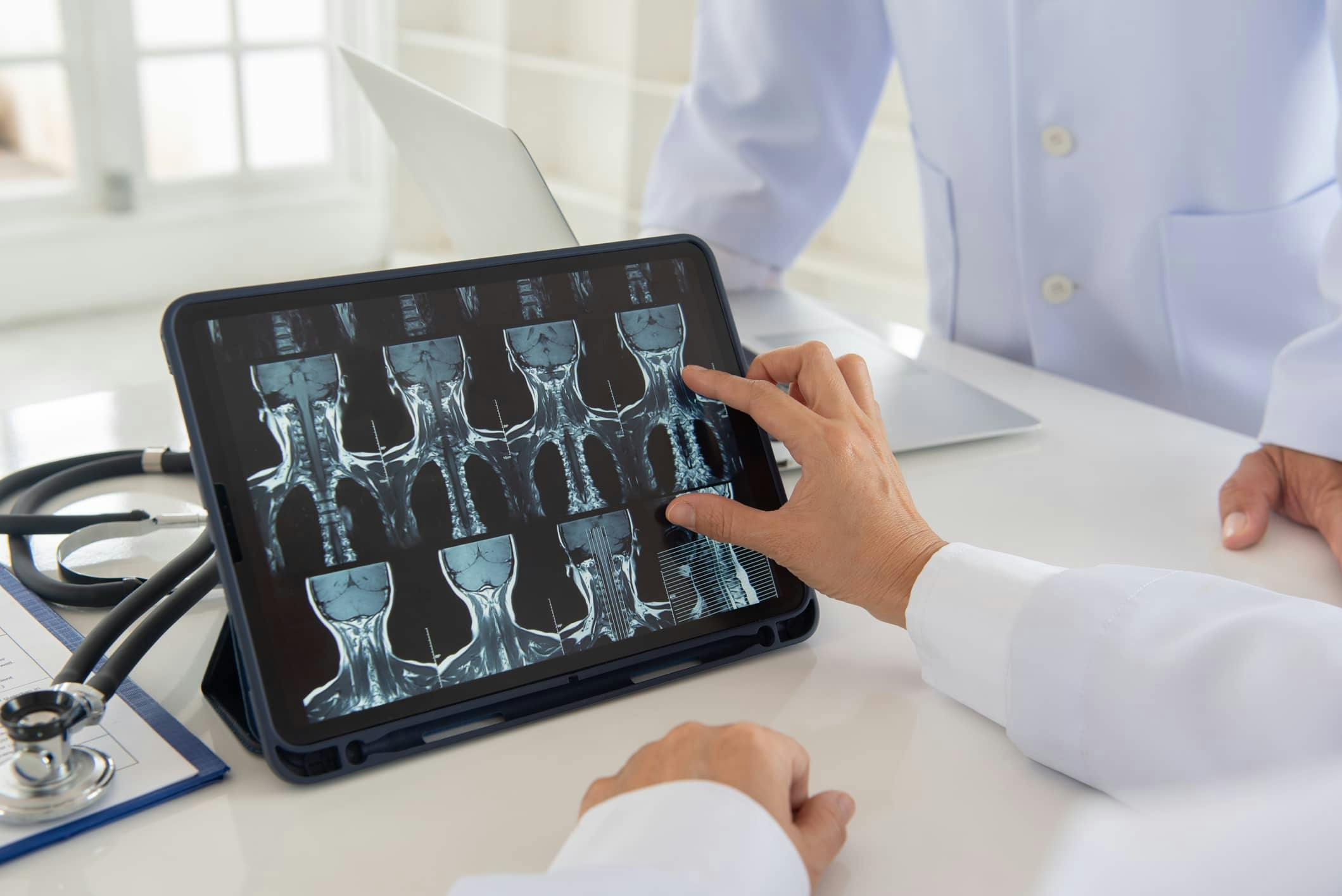Serving our New Jersey Community
Advanced X-Ray Imaging for Better Spine Care
An X-ray is one of the most recognizable and often-used diagnostic tools and plays a crucial role in swiftly identifying spinal conditions. At the Center for the Functional Restoration of the Spine, we employ X-rays to aid in diagnosing various spinal issues and injuries. Our commitment to a concierge-level quality of care ensures that you receive timely and accurate diagnostics, leading to effective treatment plans tailored to your unique needs.
When Are X-Rays Recommended?
X-rays are typically recommended for patients who have been experiencing pain for more than one month or have sustained a significant injury. If you are over the age of 60 and experience pain without a specific injury, an X-ray is also advisable at the onset of discomfort.


How X-Rays Work
During an X-ray, low doses of invisible electromagnetic energy with short wavelengths pass through your body, creating a shadowy image on a film or screen. Bones, being dense, absorb X-rays effectively and appear as white on the film, while tissues display as darker areas.
Key Benefits of X-Rays
One of the primary benefits of X-rays is their speed and efficiency. They quickly highlight bone-related issues, such as injuries to the spine, spinal tumors, or deformities. X-rays are also valuable in diagnosing conditions such as
- Degenerative disc disease
- Sciatica
- Scoliosis
- Kyphosis
- Stenosis
While X-rays are not as effective in identifying soft tissue injuries, they often serve as a valuable initial step in determining the need for further tests.
The X-Ray Procedure
During an X-ray examination, you'll lie on a table with an adjustable X-ray machine positioned above you. The procedure is painless, and you won't feel anything as the X-rays pass through your body. To ensure clarity, it's essential to remain still while the image is captured. In cases of scoliosis and kyphosis, X-rays are often taken with the patient standing.
Safety and Radiation
X-ray exposure time is extremely brief, and modern equipment ensures minimal radiation doses. However, X-rays are typically avoided during pregnancy, and a lead shield should be used to protect you from X-ray beams.

Make an Appointment Today
If you've been experiencing pain or have suffered a non-emergent injury, don't hesitate to visit us at one of our conveniently located offices in Shrewsbury and Toms River.
Our expert care ensures you receive prompt and accurate diagnostics, allowing us to create a personalized treatment plan to address your orthopedic needs. Take the first step of total rehabilitation – contact us today to make an appointment.



